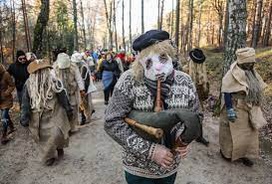Discover the Latvian traditions of MĀRTIŅDIENA - St. Martin's Day
- Nord Haus

- Nov 8, 2023
- 2 min read
The midpoint between the autumnal equinox and the winter solstice.

Mārtiņdiena has deep historical roots in Latvia which dates back to the pre-Christian era. The Latvian tradition celebrations are a mix of ancient pagan traditions that celebrate the end of the harvest and the start of winter and more modern Christian traditions brought by the Germans in the 16th and 17th Centuries. With the spread of Christianity, the celebrations became associated with St. Martin, a saint known for his compassion and charity.
Traditions in Latvia

St. Martin's Day falls on November 11th in the Christian calendar, but the Latvian celebration takes place on November 10th, the eve of the saint's day.
Typically a large feast occurs with the centrepiece of the meal being roast goose and chicken.
The Christian tradition of feasting on goose is said to have originated from the legend of St. Martin and his act of kindness, whilst pagan beliefs are associated with the provision of sun, energy and fertility for the coming year with roosters protecting livestock.
The Latvian tradition Mārtiņdiena celebrations are similar to Halloween. People walk from house to house in the countryside wearing costumes and masks in a large procession singing and dancing. The masks are designed to drive away bad spirits and not to scare people. There are 3 popular masks all with special meanings and powers. The people wearing the special masks are said to be a pathway to the spirit world, and able to communicate with spirits and people.

STĀRKIS /CRANE
The person with the crane mask (beak) walks through the house pinching revellers with its beak, this is meant to cleanse the person and drive away bad spirits.
LĀCIS/BEAR
The bear mask wearer walks to each corner of the house and bellows out a mighty roar this is to bring good luck to the household.
NĀVE /DEATH
Anyone who dances with the person in the
death mask will have their sicknesses and weaknesses purged and are brought good health.
Mārtińdiena is also associated with many superstitions, including the belief that the weather on this day can predict the type of winter ahead. A sunny and warm day suggests a mild winter, while a cold and snowy day suggests a harsh winter.






Comments